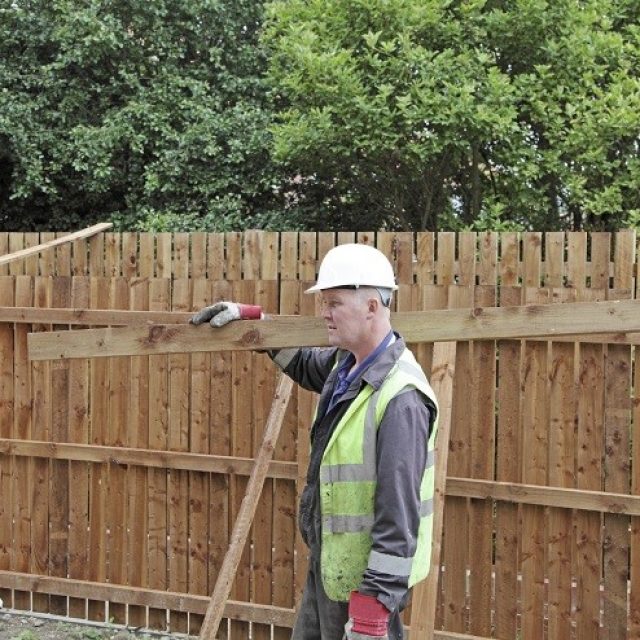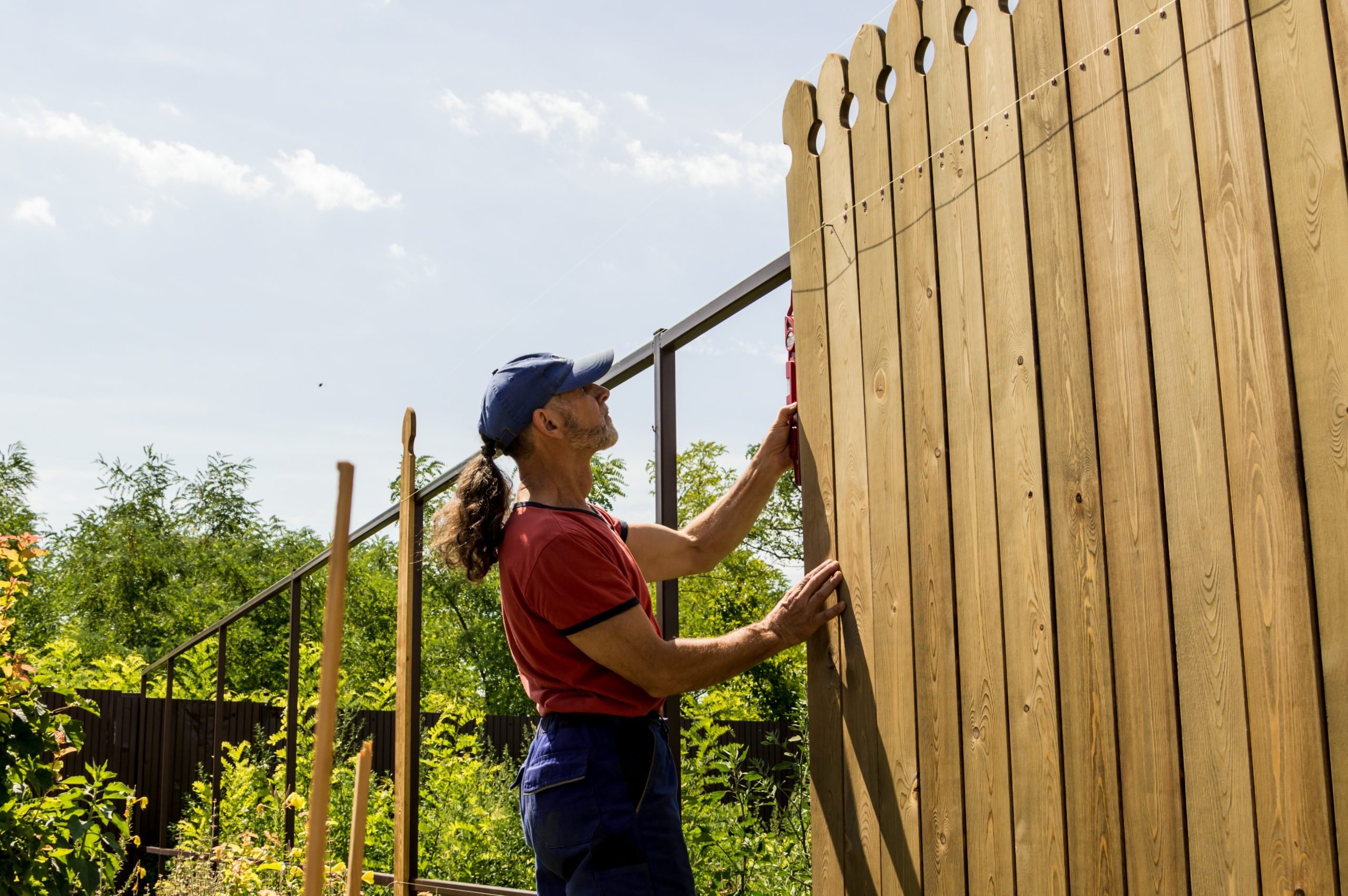Low-Cost Services from a Local Fence Contractor Owensboro KY
Low-Cost Services from a Local Fence Contractor Owensboro KY
Blog Article
Just How to Determine Common Problems That Call For Immediate Fencing Repair Service
It is vital to find issues before they become bigger troubles when it comes to keeping your fence. On a regular basis checking for indications of deteriorating wood, leaning panels, or corrosion can save you time and cash in the lengthy run. You may not realize how weather and pests can endanger your fencing's stability. Allow's explore the common indications that indicate your fencing requires prompt interest, so you can keep your home secure and looking its best.
Indicators of Rotting Wood in Wooden Fences
Have you observed your wood fence looking a little bit shabby? If so, it may be time to look for indicators of decaying timber. First, take a look at the base of the posts and panels for soft places. If you continue the timber and it feels spongy or collapses, that's a clear sign of rot. Next, seek discoloration or dark spots on the timber-- these often signal moisture damages. Take note of any type of peeling paint or finish, as this can reveal the timber to additional decay. In addition, a pungent, mildewy odor can indicate fungal growth. Don't neglect to inspect joints and connections; if they hang or falling apart, the timber beneath is most likely jeopardized. By catching these signs early, you can avoid extra substantial damage and keep your fencing standing solid. Normal maintenance is essential to prolonging the life of your wood fence.
Leaning or Tilting Fence Panels
It's crucial to comprehend what caused it if you've seen your fence panels leaning or tilting. This problem could indicate underlying structural damages that needs your focus. Let's check out the typical causes and the repair service choices offered to get your fence back in shape.

Root Causes Of Leaning Panels
When you notice your fencing panels leaning or turning, it's usually an indicator of underlying problems that need addressing. One usual cause is insufficient water drainage; extreme water can deteriorate the dirt around the fence posts, deteriorating their assistance. One more perpetrator can be strong winds or tornados that press versus the panels, particularly if they're not appropriately secured. Furthermore, the all-natural settling of soil gradually can cause blog posts to shift, causing a tilt. Parasites, like termites, can jeopardize the stability of wood panels, triggering them to lean as well. Poor installment methods might result in panels not being safely set, leaving them at risk to leaning under stress. Address these problems without delay to preserve your fence's stability.
Indicators of Structural Damages
Noticing turning or leaning fencing panels can be worrying, as these problems frequently indicate structural damage that requires immediate focus. When your fencing begins to lean, it may indicate that the messages are shifting or that the dirt around them has deteriorated. Pay very close attention to voids in between posts or panels, as these can likewise recommend instability. deck builder. Furthermore, look for splits or splintering in the timber, which can weaken the total structure. If you notice corrosion or corrosion on steel elements, it can jeopardize the honesty of the fencing. Remember, disregarding these indicators can result in more serious damage down the line, so it's vital to examine the circumstance immediately and act before it aggravates
Repair Options Available

Rust and Rust in Steel Fences
If you own a metal fencing, you could discover corrosion and deterioration sneaking in over time, particularly if it's revealed to dampness. These problems not just influence the look of your fence however can additionally endanger its architectural honesty. To identify corrosion, try to find reddish-brown areas or patches, which suggest the steel is oxidizing. Corrosion can spread swiftly if left untreated, leading and weakening the fence to expensive repairs.To take on corrosion and corrosion, you ought to clean up the impacted locations with a wire brush and apply a rust-inhibiting primer. When the primer dries, consider painting the fencing with a weather-resistant paint to secure it further. Normal upkeep, such as examining for indicators of rust and touching up paint as required, will help expand your fence's life-span. Attending to these problems without delay ensures your metal fencing continues to be strong and aesthetically appealing for years ahead.
Splits and Divides in Vinyl Secure Fencing

Sources Of Vinyl Damages
Plastic fencing is preferred for its toughness, yet it can still experience from cracks and divides as a result of numerous elements. One major cause is extreme temperature level fluctuations. It can compromise the material over time when plastic broadens in the warm and contracts in the chilly. Additionally, exposure to rough sunshine can cause UV degradation, making the vinyl weak. Physical influences, like heavy branches or unexpected collisions, can also create fractures. Poor installment or making use of low-quality products can intensify these concerns. Moreover, age contributes; older vinyl secure fencing is a lot more at risk to damages. Normal evaluations can help you determine these aspects before they bring about significant issues. Take positive steps to assure your fencing remains solid and intact.
Fixing Cracks Effectively
Cracks and divides in your plastic fencing can be worrying, resolving them immediately can protect against further damage and keep the fence's look. Assess the size of the crack. For little splits, a plastic repair service kit typically consists of glue that can bond the edges, giving a smooth fix. Clean the location completely prior to using the adhesive, guaranteeing it sticks appropriately. For larger splits, you may require to use a vinyl spot. Cut the spot to dimension, see it here use adhesive around the edges, and press it strongly onto the split. Permit it to cure according to the supplier's instructions. Normal upkeep and quick repair services can prolong your fence's lifespan, maintaining it looking great for years ahead.
Loose or Missing Out On Fencing Messages
Loose or missing fencing blog posts can threaten the stability of your whole fence structure. It's essential to deal with the issue instantly if you notice any kind of blog posts wobbling or leaning. Check for any kind of indicators of movement, as this can bring about additional damage in time. You can quickly evaluate the trouble by offering each article a mild shake-- if it feels unstable, it's time to take action.For missing out on blog posts, you'll need to change them as quickly as feasible to preserve your fencing's honesty. Make certain they're safely secured in the ground with concrete or crushed rock for added security when you set up brand-new posts. If an article hangs, tighten it by adding added assistance or driving it deeper right into the ground.Ignoring these issues can lead to larger problems, like spaces in your fence or perhaps total collapse. Keep an eye on your messages and remain positive about repairs!
Damage From Weather Condition and Natural Elements
Weather and natural components can damage your fence, bring about different types of damages that call for prompt attention. Heavy rainfall can cause timber to rot, making it weak and unpredictable. Snow accumulation may flex or damage panels, while solid winds can uproot fence posts or create areas to lean.If you observe fractures or splintering in wooden fencings, it suggests drying because of extreme sun exposure. Steel fences can corrosion if safety finishes use off, especially in seaside or damp areas.Inspect your fence consistently after storms or extreme weather condition to capture any kind of damages early. Dealing with these issues promptly can save you from costly repair work down the line. Don't wait until a small problem becomes a major one; stay aggressive and keep your fence leading form to keep both functionality and curb charm.
Parasite Invasion and Termite Damage
It's necessary to act swiftly to prevent more destruction when you see indications of insect site invasion or termite damages. Seek mud tubes along your fencing or hollow-sounding wood, as these suggest termites go to job. You could additionally see tiny openings or frass, which is termite droppings resembling sawdust. If you spot any of these indicators, it's time to assess the damage.Don' t wait until it's also late; bugs can compromise your fence's integrity. Inspect the surrounding location for beetles or ants, as they may be adding to the issue. If you believe an invasion, think about speaking to an insect control expert to verify and deal with the issue.Repairing or changing afflicted sections of your fencing without delay not only restores its toughness but additionally protects against pests from spreading additionally. Remain vigilant to keep your building pest-free and secure.
Frequently Asked Inquiries
Just how Commonly Should I Check My Fence for Damages?
You must inspect your fence at least twice a year, ideally during springtime and loss. Normal checks aid you detect damages early, saving you money and time on repair work while maintaining your home's appearance and safety and security.
Can I Repair a Fence Myself or Hire a Professional?
You can most definitely repair a fencing on your own if you have the right tools and abilities. Hiring an expert guarantees quality work and saves you time, particularly for complicated fixings or comprehensive damage.
What Equipment Are Required for Fundamental Fence Repair Services?
For basic fencing fixings, you'll need devices like a hammer, screwdriver, pliers, a saw, a level, and gauging tape. deck builder. Relying on the repair service, you may also call for nails, screws, or substitute boards
Just How Much Does Fencing Repair Typically Expense?
Fence repair service prices vary widely, yet you can expect to pay in between $200 and $1,500 depending on materials, labor, and level of damage. It's clever to obtain several quotes for the best offer.
When Is the Ideal Time of Year for Fencing Services?
The very best time for fence repairs is during mild weather condition, usually in spring or very early autumn. You'll prevent extreme temperatures, making it much easier to work and making sure the products set effectively for lasting longevity (deck builder). Discovering tilting or leaning fence panels can be disconcerting, as these problems typically indicate architectural damage that requires prompt interest. Loose or missing fence articles try these out can undermine the stability of your entire fence structure. Snow accumulation may bend or damage panels, while solid winds can root out fence messages or create sections to lean.If you observe cracks or splintering in wooden fencings, it's an indicator of drying out due to extreme sun exposure. Metal fences can corrosion if protective layers use off, specifically in seaside or humid areas.Inspect your fencing on a regular basis after tornados or severe weather to capture any type of damages early. Fence repair prices vary widely, yet you can expect to pay in between $200 and $1,500 depending on materials, labor, and level of damages
Report this page